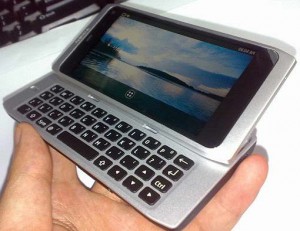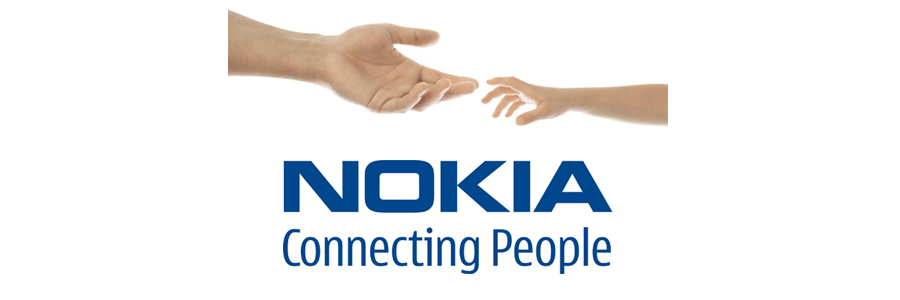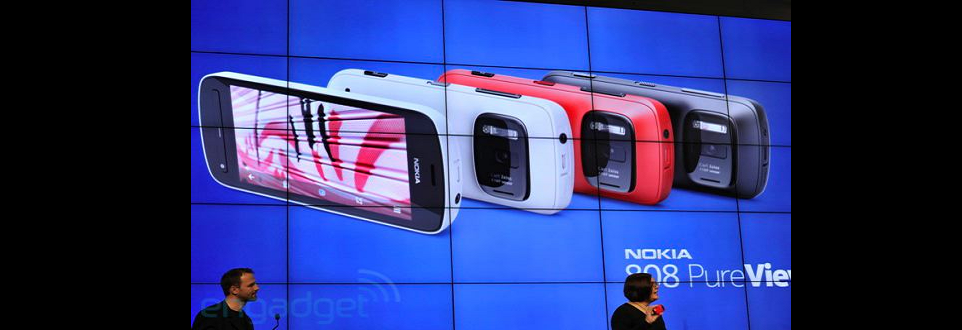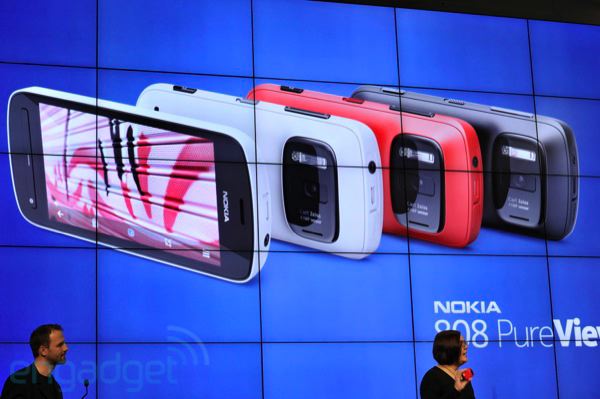When Nokia unveiled the N8 in 2010 it set the bar for imaging in mobile devices. Not for the first time either – Nokia phones have allowed users to take high quality pictures for a long time now, and at the time the N8 was released Apple still hadn’t worked out how to include a flash for low-light situations and HTC cameras were all but a joke to both the industry and the public. While the competition has improved remarkably in the past 12 months – with iPhones and HTCs taking remarkably good pictures now – the N8 has remained the undisputed image king, thanks in large part to the sensor it packed, allowing more light than any other phone on the market.
Today, however, sees the N8 dethroned. It wasn’t the competition that knocked it off its top spot, but Nokia itself with the Nokia 808, the much rumoured and long awaited successor to the N8. A year ago Nokia CEO Stephen Elop announced that the image quality and capabilities of the N8 were the tip of the iceberg of what Nokia was capable of and testing in its labs, and that piqued interest. According to Nokia:
“PureView imaging technology is the result of many years of research and development and the tangible fruits of this work are amazing image quality, lossless zoom, and superior low light performance…
…One of the reasons the Nokia 808 PureView has taken so long to develop is down to processing power.
We simply couldn’t get hold of enough. Even the most powerful mobile chipsets have an upper limit of
around 20Mpix image processing capability. The Nokia 808 PureView eats up more than double that.
For video, the amount of pixels handled through the processing chain is staggering — over 1 billion
pixels per second, and 16x oversampling. That’s a throughput of pixels 16 times greater than many
other smartphones.”
The Nokia N8 had a sensor of 1/1.83, making it the largest ever to appear in a mobile phone and even many point and shoot camera. To drop jaws around the world, the 808 has a sensor 2.5 times larger than that of the N8, and the device packs Xenon flash for snapping photos, and LED for recording videos, offering users the best in both worlds.
For full details and information of why this is important and why it has leapfrogged over the competition without any hope of being caught for many years, Nokia’s own .pdf can be read here, and excerpts can be read below. Before that though, let’s take a look at some sample photos taken from Nokia’s Flickr account



PureView Pro imaging technology doesn’t represent a step change for camera smartphones performance, so much as a quantum leap forward. The first device to feature Nokia PureView Pro camera technology is the Nokia 808 PureView, which gives people the means to take better images and video footage than ever before. Nokia PureView Pro turns conventional thinking on its head. It dispenses with the usual scaling/ interpolation model of digital zoom used in virtually all smartphones, as well as optical zoom used in most digital cameras, where a series of lens elements moves back and forth to vary the magnification and field of view. Instead, we’ve taken a completely new road.
The result?
Unprecedented camera control and versatility, combined with truly spectacular-quality images and video. Nokia 808 PureView sets new industry standards — it will give you around 3x lossless zoom for stills, and 4x zoom in full HD 1080p. For 720p HD video, you’re looking at 6x lossless zoom. And for nHD (640×360) video, an amazing 12x zoom!
Always true to the image
With the Nokia N8, we limited the digital zoom to just 2x to avoid too much compromise to image
quality. But at the end of the day, this was still a conventional digital zoom. With the Nokia 808 PureView,
zoom is handled completely differently — like nothing that has gone before. We’ve taken the radical
decision not to use any upscaling whatsoever. There isn’t even a setting for it.
When you zoom with the Nokia 808 PureView, in effect you are just selecting the relevant area of the
sensor. So with no zoom, the full area of the sensor corresponding to the aspect ratio is used. The limit
of the zoom (regardless of the resolution setting for stills or video) is reached when the selected output
resolution becomes the same as the input resolution .
For example, with the default setting of 5Mpix (3072 x 1728), once the area of the sensor reaches
3072 x 1728, you’ve hit the zoom limit. This means the zoom is always true to the image you want.
New depth, new detail
The way Nokia PureView Pro zoom works gives you many benefits. But the main one is undoubtedly
‘pixel oversampling’.
Pixel oversampling combines many pixels to create a single (super) pixel. When this happens, you keep
virtually all the detail, but filter away visual noise from the image. The speckled, grainy look you tend to
get in low-lighting conditions is greatly reduced. And in good light, visual noise is virtually non-existent.
Which means the images you can take are more natural and beautiful than ever. They are purer, perhaps
a more accurate representation of the original subject than has ever been achieved before.
Less is more.
The simple structure of Nokia PureView Pro beats more complicated designs hands down. Image
definition is pin sharp, way superior to conventional zoom designs. Conventional designs need many
more lens elements to provide the zoom capability and correct aberrations, but these interfere with
definition and/or light transmission. Our simple structure has enabled a significant improvement in
manufacturing precision, and our lenses are produced with 10x greater precision than SLR lenses.
This was essential to allow the PureView Pro sensor and optics to work in complete synergy.
Neat and compact.
The size of the Nokia 808 PureView camera (including sensor and optics) is at least 50%-70% smaller
than a conventional optical zoom design
Effective zoom settings.
You can get right up close with any zoom setting. Typically, optical zoom gets closest with wide
(rather than tele) lens settings. Which means you have to stand physically closer to whatever you’re
shooting, obscuring the light and possibly casting unwanted shadows. With the Nokia 808 PureView,
you can use full zoom capability at a shooting distance of 15cm providing greater than ever
magnification of small objects with full zoom.
On a more technical note…
oversampling eliminates Bayer pattern problems. For example, conventional 8MPix sensors include only
4Mpix green, 2Mpix red and 2Mpix blue pixels, which are interpolated to 8Mpix R, G, B image. With pixel
oversampling, all pixels become true R, G, and B pixels. What’s more, based on Nyqvist theorem, you
actually need oversampling for good performance. For example, audio needs to be sampled at 44 kHz
to get good 22 kHz quality.
Quality, not quantity
People will inevitably home in on the number of pixels the Nokia 808 PureView packs, but they’re
missing the point. The ‘big deal’ is how they’re used. At Nokia, our focus has always been capability
and performance.
The main way to build smaller cameras over the years has been to reduce the pixel size. These have
shrunk just over the past 6 years from 2.2 microns, to 1.75 microns, to 1.4 microns (which is where
most compact digital cameras and smartphones are today). Some new products are on the way with
1.1 micron pixels. But here’s the problem. The smaller the pixel, the less photons each pixel is able to
collect. Less photons, less image quality. There’s also more visual noise in images/videos, and various
other knock on effects. In our experience, when new, smaller pixel size sensors are first released, they
tend to be worse than the previous generation. While others jump in, banking on pixel numbers instead
of performance, we prefer to skip early iterations.
Lessons learned
With the 12Mpix Nokia N8, for example, we were more concerned with capturing photons of light than
ramping up the number of megapixels. We bucked the trend and went with a large sensor and 1.75
micron pixels — but the result was a new benchmark in image and video quality. This set the Nokia N8
apart at the time, and competitors are still trying to match it two years later. The Nokia PureView Pro
comes is equipped with an even larger sensor, 1/1.2” approximately 2.5 larger than the sensor used
in the Nokia N8. The result is an even larger area to collect photons of light. With PureView we’re
continuing to make choices focused on performance rather than pixels for pixels’ sake. Fewer but
better pixels can provide not just better image and video quality, but better overall user experience
and system capability.
In fact, 5Mpix-6Mpix is more than enough for viewing images on PC, TV, online or smartphones.
After all, how often do we print images bigger than even A4?









